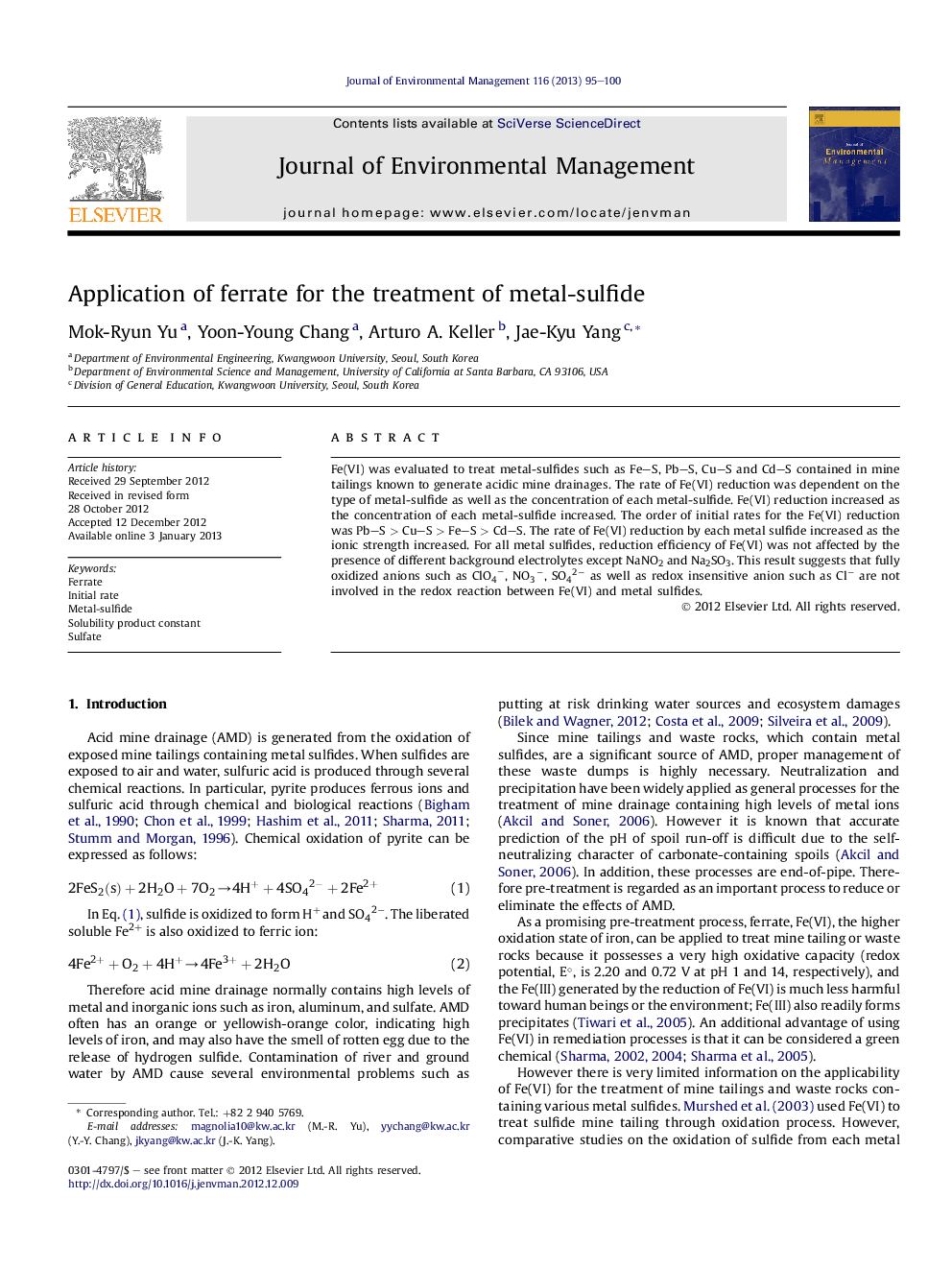| Article ID | Journal | Published Year | Pages | File Type |
|---|---|---|---|---|
| 1056384 | Journal of Environmental Management | 2013 | 6 Pages |
Fe(VI) was evaluated to treat metal-sulfides such as Fe–S, Pb–S, Cu–S and Cd–S contained in mine tailings known to generate acidic mine drainages. The rate of Fe(VI) reduction was dependent on the type of metal-sulfide as well as the concentration of each metal-sulfide. Fe(VI) reduction increased as the concentration of each metal-sulfide increased. The order of initial rates for the Fe(VI) reduction was Pb–S > Cu–S > Fe–S > Cd–S. The rate of Fe(VI) reduction by each metal sulfide increased as the ionic strength increased. For all metal sulfides, reduction efficiency of Fe(VI) was not affected by the presence of different background electrolytes except NaNO2 and Na2SO3. This result suggests that fully oxidized anions such as ClO4−ClO4−, NO3−NO3−, SO42−SO42− as well as redox insensitive anion such as Cl− are not involved in the redox reaction between Fe(VI) and metal sulfides.
► Treatability of mine tailing by Fe(VI) was investigated with pure metal-sulfides. ► pH 9 was the best condition to treat Fe–S considering self-decomposition of Fe(VI). ► The order of Fe(VI) reduction by metal-sulfide was Pb–S > Cu–S > Fe–S > Cd–S. ► Fe(VI) reduction was not clearly correlated with the stability of metal-sulfide. ► Fe(VI) can treat metal-sulfides through oxidation of sulfide to sulfate ion.
